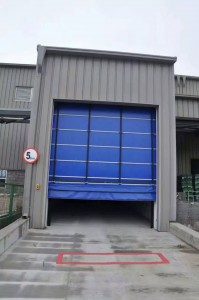Garage doors are a ubiquitous feature in our modern homes, providing safety, convenience and protection to our vehicles and belongings. However, one must be aware of the potential dangers that may arise from this seemingly innocuous family mechanism. In this blog, we will delve into the topic of garage door springs and shed light on whether they are a threat to our safety.
Learn about the function of garage door springs:
To understand the dangers associated with garage door springs, it is critical to understand their purpose. Garage doors are often heavy and bulky, and it can be difficult to open and close them smoothly by hand alone. This is where springs come into play. Garage door springs act as a counterbalance, reducing the force required to operate the door smoothly. They have a lot of tension, allowing the door to be raised or lowered effortlessly.
Risks of garage door springs:
While garage door springs perform a vital function, they can also be potentially dangerous if not handled or maintained properly. There are two types of springs commonly used for garage doors: torsion springs and extension springs.
1. Torsion spring:
The torsion spring sits above the garage door, parallel to the ceiling. They are tightly wound and under a lot of tension. If a torsion spring breaks, it may loosen violently, releasing its stored energy. This sudden release could cause the spring to fly through the garage, causing serious injury to anyone nearby. Additionally, a loose torsion spring could accidentally cause the garage door to slam shut, potentially trapping or crushing anyone unfortunate enough to be underneath the door.
2. Tension spring:
Tension springs are usually located on either side of the garage door, parallel to the tracks. Unlike torsion springs, they expand and contract as the door opens and closes. If a tension spring is worn or damaged, it may snap under tension, similar to a snapped rubber band. The recoil can project metal shards or even the spring itself, endangering anyone in its path.
Use garage door springs to stay safe:
Given the potential risks, it’s important to prioritize safety when dealing with garage door springs. Here are some basic precautions to take:
1. Professional inspection and maintenance: Schedule regular inspections with a garage door specialist who can identify any signs of wear or damage. Regular maintenance will extend the life of your springs and keep them in working order.
2. DO NOT ATTEMPT TO REPAIR YOURSELF: Never repair or replace garage door springs without the necessary expertise. Their high tension makes handling them extremely dangerous without proper training and tools.
3. Watch for warning signs: Listen for any unusual sounds, such as squeaking or moaning, which may indicate a spring failure. Also, if the garage door starts to sag on one side or struggles to open and close smoothly, it could be a sign of a problem with the springs.
in conclusion:
While garage door springs are critical to the function of your garage door, it’s important to recognize their potential dangers. Torsion and tension springs can present a significant risk if they break or fail. By raising awareness of these hazards and following the recommended safety precautions, we can keep our garage door systems running smoothly and, most importantly, keep ourselves and our loved ones safe from harm.
Post time: Jul-05-2023

